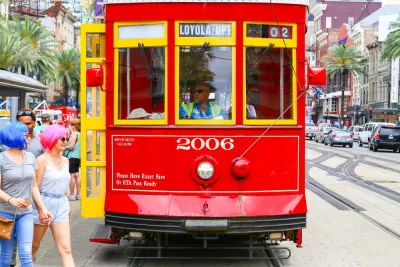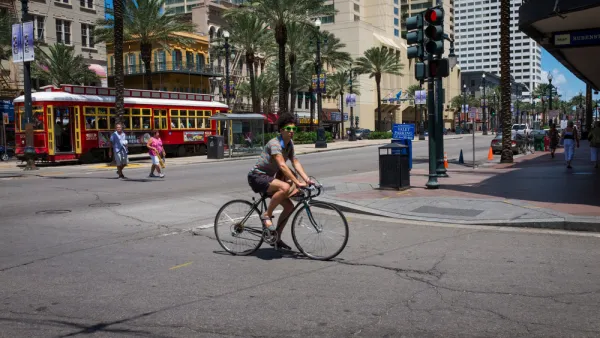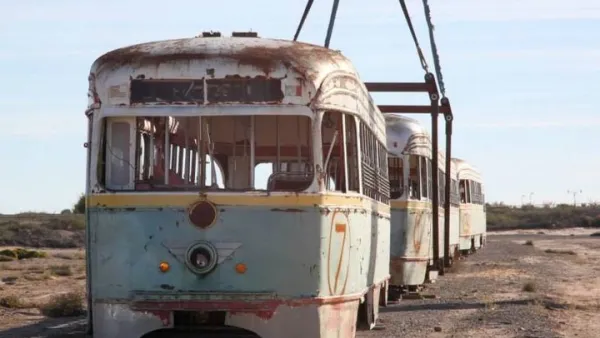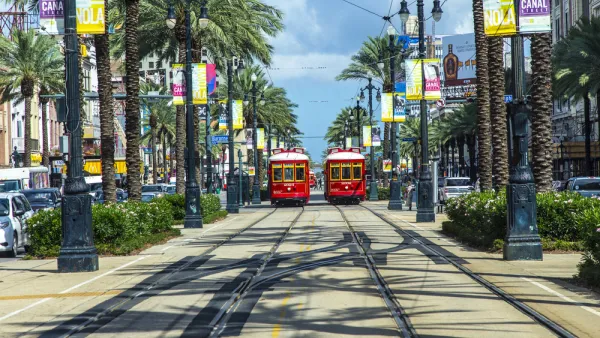Advocates have reason to be concerned about the performance of the two newest streetcar lines in New Orleans—both the largest transit projects after the destruction of Hurricane Katrina.

"A public transit advocacy group is calling into question the city's return on investment in two new streetcar lines completed in recent years at a cost of $75 million, reports Beau Evans.
The report by Ride New Orleans criticizes the results for the new 1.6-mile, roughly $40 million streetcar line that runs along Rampart Street from Canal Street to St. Claude Avenue, as well as the slightly older 1.5-mile, roughly $35 million streetcar line on Loyola Avenue. The main complaint for the two lines: that they've actually slowed travel times for transit users commuting to some 1,000 jobs located along the routes.
"Both lines were realized by a $75 million federal grant and marked the biggest capital projects undertaken by the New Orleans Regional Transit Authority since Hurricane Katrina wrecked the city's transit system in 2005," according to Evans.
It's not the first time Ride New Orleans has criticized the city's post-Katrina transit planning efforts. A report in July 2014 found inefficiencies in spending by the New Orleans Regional Transit Authority.
FULL STORY: New streetcar lines have hindered residents' access to jobs, report says

National Parks Layoffs Will Cause Communities to Lose Billions
Thousands of essential park workers were laid off this week, just before the busy spring break season.

Retro-silient?: America’s First “Eco-burb,” The Woodlands Turns 50
A master-planned community north of Houston offers lessons on green infrastructure and resilient design, but falls short of its founder’s lofty affordability and walkability goals.

Delivering for America Plan Will Downgrade Mail Service in at Least 49.5 Percent of Zip Codes
Republican and Democrat lawmakers criticize the plan for its disproportionate negative impact on rural communities.

Test News Post 1
This is a summary

Test News Headline 46
Test for the image on the front page.

Balancing Bombs and Butterflies: How the National Guard Protects a Rare Species
The National Guard at Fort Indiantown Gap uses GIS technology and land management strategies to balance military training with conservation efforts, ensuring the survival of the rare eastern regal fritillary butterfly.
Urban Design for Planners 1: Software Tools
This six-course series explores essential urban design concepts using open source software and equips planners with the tools they need to participate fully in the urban design process.
Planning for Universal Design
Learn the tools for implementing Universal Design in planning regulations.
EMC Planning Group, Inc.
Planetizen
Planetizen
Mpact (formerly Rail~Volution)
Great Falls Development Authority, Inc.
HUDs Office of Policy Development and Research
NYU Wagner Graduate School of Public Service





























